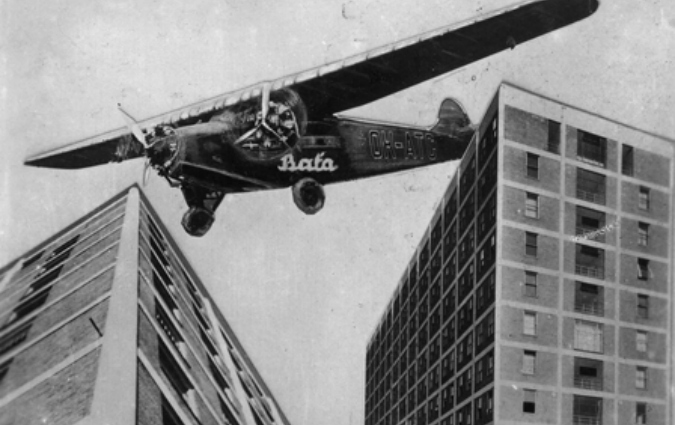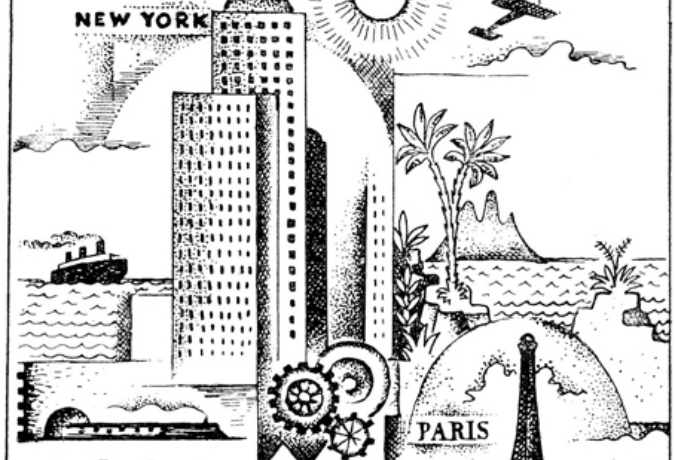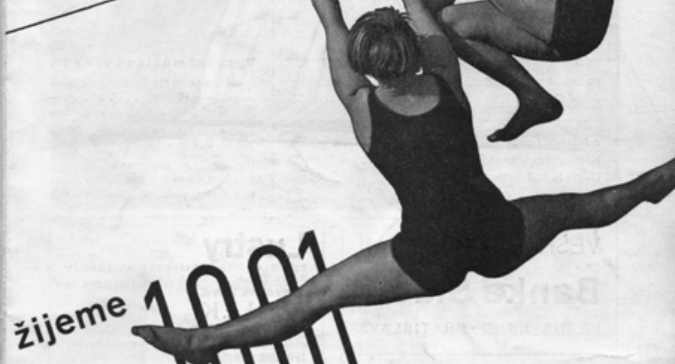“Prague never lets you go,” reads the oft-quoted line from Kafka. “This dear little mother has sharp claws.” One man who has felt those piercing talons get under his skin is Derek Sayer, Professor of Cultural History at Lancaster University and author of Prague, Capital of the Twentieth Century: A Surrealist History. Recently included in the Financial Times Books of the Year round-up, it’s a richly researched volume which vividly depicts the city’s vibrant cultural landscape during the last century and convincingly makes the case that the Czech capital has experienced (and suffered) more ways of being modern than any other metropolis.
We caught up with Derek to find out more about his fascination with Prague and just what makes it so surreal—as well as his favourite spot to pick up chlebíčky.
This is your second book about Prague. Why is the city the subject of such fascination for you? When and how did your relationship with Prague begin?
I first visited Czechoslovakia in the spring of 1990—between the Velvet Revolution and the first free elections in 42 years. The reasons were purely personal. My first wife, who was Czech, was returning home for the first time since 1967. It was a time of great hope but also of palpable fear. One of my most vivid memories is of going to see Verdi’s Nabucco in Ostrava and hearing the great patriotic chorus “Va, pensiero” encored three times. Someone told me during the interval that the same thing had happened at the National Theater after the Soviet invasion of 1968, leading to Nabucco being banned from Czech stages for the next twenty years. He added: “If the communists win the elections they’ll make Cambodia look like a dinner party.”
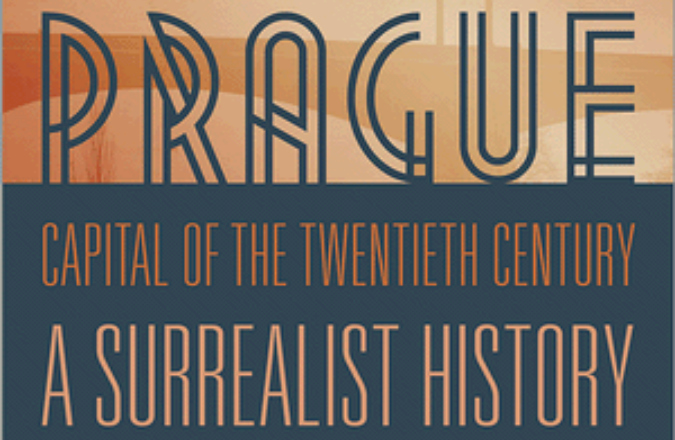
I spent ten days in Prague and knew immediately that I wanted to return. It wasn’t the beauty of the city that drew me so much as an intuition that Prague’s historical experience crystalizes so much that has defined “modernity”—from the national struggles of the nineteenth century through liberal democracy, fascism, communism, and beyond—in a way that few other places do. Look at the architecture, at the twentieth-century dreams caught in concrete and stone, from Obecní dům to Veletržní palác to the Žižkov TV tower to Frank Gehry’s Dancing House. I had a hunch that Prague’s history would offer a significantly different vantage point on what “the modern condition” is—if, that is, there is a singular modern condition at all.
I didn’t know it then, but that hunch completely changed my academic career. I was fortunate to get grant funding from Canada to live in Prague from December 1991 through June 1993. I have visited the city many times since, most recently last July. The Coasts of Bohemia—which is more of a general Czech cultural history than a book specifically about Prague—came out in 1998, Prague, Capital of the Twentieth Century in 2013. These are big books that take time to research, incubate and write. I often worked on other stuff as well, but Prague has been at the core of my thinking for the last twenty years. My use of the city to undermine and irritate grand narratives of history-as-progress seems to gel with the wider skepticism of a “postmodern” age.
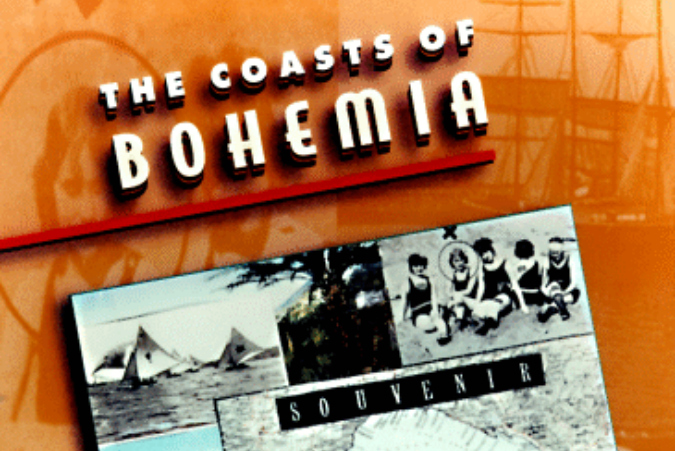
The title of the book implies that the city’s significance (and indeed the Czech contribution to literature and culture during that hundred years) has been widely overlooked. Would you agree with that assessment?
Yes and no. One way viewing modernity from Prague might open our minds would be to broaden the range of social types that we regard as quintessentially modern: Baudelaire’s idling flâneur, for example, might well turn out to be a secret policeman. I would want to add Václav Havel’s compliant greengrocer (in “The Power of the Powerless”) and the refugee and exile to the gallery of modern social types. The Czech Lands have produced more than their fair share of exiles throughout the twentieth century, and they have often impacted significantly on other cultures: think of Alfons Mucha, František Kupka, Bohuslav Martinů, Miloš Forman, Martina Navrátilová. It was a Czech, Ladislav Sutnar, who designed the American telephone directory. Thanks in part to émigrés like Milan Kundera and Josef Škvorecký there are probably more Czech writers translated into English today, from Ivan Klíma and Bohumil Hrabal to Jáchym Topol and Michal Vieweigh, than from any other “minor” European language. Leoš Janáček is widely acknowledged as the greatest operatic composer of the twentieth century. So Czechs are hardly unknown in “the West.”
But the picture remains complicated. I have shown in Prague, Capital of the Twentieth Century that before World War I, and in particular between the wars, Czechs were at the forefront of the international avant-garde from architecture to music and beyond. Cubism left a unique imprint on the city’s buildings, while the city later became a center of surrealism second only to Paris. This legacy was very largely (and more or less deliberately) “forgotten” on both sides of the Iron Curtain during the Cold War years. One consequence is that standard western versions of the modernist artistic canon need comprehensive rethinking, especially in the visual arts.
What were the challenges (research, literary, psychological, and logistical) in writing this book?
The main challenge was how to come up with a way of writing that does justice to the richness of the book’s subject matter. I dislike most academic writing, not just because it is dry, boring, and often obscure, but because it makes tacit assumptions that I think are simply wrong. I am not prepared to simplify real-world complexities, ambiguities and multiplicities in order to produce an artificially coherent narrative. I do not believe that history has neat beginnings and endings or can always be made sense of—least of all in a place like Prague—and see no point in writing as if it did, trying to shoehorn everything into the straightjacket of a logically ordered argument. Instead, the book is a kind of montage: a tapestry woven of microscopic details (the plot of an opera, the history of a street name, the course of a love affair). In this approach I have been influenced by Walter Benjamin’s Arcades Project, from which I borrow my title. But unlike Benjamin, I do try to tell a story—or better yet, a multitude of interlocking stories—and carry readers with me. Though there are many digressions, Prague has a plot and a dénouement. I wanted the book to be read!
The book includes a rich selection of illustrations from postcards, reproductions of magazine front covers, engravings and sculptures. Is there an image which resonates with you particularly strongly?
Probably the image I used as the frontispiece, from Abeceda (Alphabet), published by Jan Otto for Christmas 1926. Milča Mayerová is dancing the letter A from Vítězslav Nezval’s poem “Alphabet”; Karel Teige sets the photo within a high modernist typeface A. By common consent Abeceda is a landmark of avant-garde book design. It is also, for me, an extraordinarily exuberant image, a joyful pinnacle of human aspiration against which to plummet the depths of human abjection that came after.
You intimately outline the connections between the better known French Surrealists (Paul Eluard, Andre Breton) and their Prague-based counterparts. Why do you think that surrealism was of such interest to Czechs?
This is a difficult question to answer in a few lines. Preferring its homegrown mix of constructivism and poetism, the 1920s Czech avant-garde actually long resisted surrealism. It was only in the 1930s that Nezval, Teige, Styrský, Toyen and other future members of the Czechoslovak Surrealist Group moved closer to Breton. The CSG was officially formed only in 1934, a full decade after Breton’s Manifesto of Surrealism. I suggest in the book that the most important reasons for the rapprochement (on both sides) were political. I think that there were always major differences of sensibility between French and Czech surrealism, which have been ably discussed by the Czech surrealist Petr Král. You might say that Czech surrealism owed as much to the Good Soldier Švejk as to any doctrines emanating from Paris.
But if we take “surrealist” in the wider, everyday sense of the word, than there is a markedly surreal strand in modern Czech and Bohemian-German literature—”an appreciation of irony and absurdity, an enduring suspicion of sense-making grand theories and totalizing ideologies, and a Rabelaisian relish for the capacity of the erotic to rudely puncture all social and intellectual pretentions toward rationality,” as I put it in the book—that is equally evident, in different ways, in the writing of Franz Kafka and Jaroslav Hašek, Karel Čapek and Milan Kundera, Bohumil Hrabal and Jáchym Topol. All are alert to what Kundera calls “the density of unexpected encounters.” I find it hard to believe that such a sensibility is not connected to the vicissitudes of the city’s twentieth century, which are exceedingly difficult to reconcile with any idea of history as the unfolding of reason and progress.
In your view, does twenty-first century Prague still retain a certain element of the fairytale or the surreal? For example, you mention that the cubist lamppost off Jungmann Square reminds you of the lonely lamppost which marked the frontier of the magical land of Narnia in The Lion, The Witch and The Wardrobe. Do other striking associations like these come to mind?
The whole city is full of strange reminders. Including Franz Kafka t-shirts, posters, and (think of the associations!) nested Russian dolls.
One of the most moving sections of the book for me was where you recount the story of the Jews who were gathered at Veletržní palác before deportation – now Prague’s answer to the Tate Modern – via W.B. Sebald’s novel Austerlitz. No memorial plaque to the Holocaust has been display in Veletržní palác: as you point out, it is on the hotel next door instead – a seemingly perverse oversight. As the book is a narrative of the twentieth century, you touch on many atrocities, but which did you find the most disturbing?
I’m not in the business of quantifying horrors. The Holocaust remains for me the dark heart of the century because of the scale of the genocide and the systematic way in which it was planned and executed. The single saddest place in Prague for me is the exhibition of children’s drawings from Terezín in the Jewish Museum. But as Timothy Snyder has recently shown in his book Bloodlands, communist state terror under Stalin had at least as many victims as the Nazis. What most disturbs me in all these atrocities is that they are not the result of some inexplicable reversion to barbarism but as authentic expressions of the modern spirit as 12-tone music or cubist art—impelled and justified by modernist ideologies, planned by modern bureaucratic states, collectively executed by ordinary modern people who were only doing their job. We think them away at our peril. This is another reason why I think we get a better perspective on modernity from Prague than from London or New York.
If the souvenir shops are anything to go by, Kafka is the most significant literary figure Prague ever produced. Do you agree? Are there any other writers you would like to see featured on a souvenir mug instead?
I’m not sure the souvenir mugs have much to do with Kafka’s writing. As I say in the book, he’d likely have relished the irony of becoming the patron saint of tourist kitsch. Other significant literary figures: Hašek, Čapek, Vančura, Nezval, Hrabal, for starters. I know many Czechs don’t like him and I understand why, but if I were to award the Nobel Prize in Literature to a Czech writer, it would be Milan Kundera.
If you only had twenty-four hours to spend in Prague as a visitor, how would you use them?
Early breakfast of chlebíčky at Lahůdky Zlatý Kříž on Jungmannova ulice. Amble up Wenceslas Square, stopping to admire the Baťa store, Europa Hotel, David Černý’s upside-down Saint Wenceslas in the Lucerna Arcade, and Rudolf Kremlička’s mosaic in the Blaník Passage. Take the subway to Vyšehrad, wonder at Myslbek’s statues of fabricated Czech heroes, wander the cemetery paying homage at Josef Čapek, Karel Teige, Ferdinand Peroutka and Milada Horáková’s graves. Walk down the hill past Josef Chochol’s cubist apartment block on Neklanova ulice to the river. Take tram to Pohořelec. Take in the stunning view from Strahov Abbey, then walk down through Hradčany passing Černín Palace (scene of Jan Masaryk’s defenestration) and Loreta Church—detour to the StB torture chamber known as the domeček in the street behind it (a plaque marks the spot)—then lunch at u Černého vola (The Black Ox) pub.
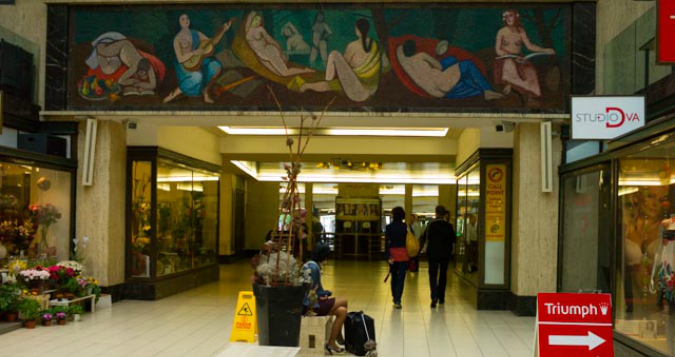
Rudolf Kremlička’s mosaic in Blaník Passage
After lunch, ignore the castle. Walk down Nerudova ulice, detouring through Jánsky vršek, across Malostranské náměstí and over Charles Bridge. Depending on mood and how late it is then either visit the Jewish Museum (make sure not to miss the memorial in the Pinkas Synagogue) or take a tram to Veletržní palác in Holešovice to see the National Gallery’s excellent collection of modern art.
For dinner, pub food: pivní sýr (beer cheese) at u Zlatého tygr (The Golden Tiger), where Bohumil Hrabal used to hold court and Václav Havel once bought Bill Clinton to play sax, is pretty good if you can find a seat; or maybe smažený vepřový řízek (pork schnitzel) washed down with the excellent Budvar at u Medvídků (The Bear Cubs) on Na Perštýně. Wind up this very sentimental journey with palačinky (Czech crepes) and a turecká káva (the Czech idea of a Turkish coffee) followed by a slivovice or two at the Grand Café Slavia at the corner of the Smetana Embankment and Národní třída, where Havel once used to hang out with his dissident friends.
Are there any particular examples of modern architecture in Prague which you find insufferable?
No. There are many individual buildings (of all periods) that I dislike, but one of the magical things about Prague—helped along by the city not being seriously bombed during World War II and possibly by communist neglect having sometimes preserved what capitalist enterprise might have destroyed—is the architectural collage it offers. Functionalism rubs shoulders with art nouveau, which snuggles up to baroque.
Do you have definite plans to return to Prague again – in your writings or in person? What are your future projects?
I hope I’ll return to Prague many times both in my writing and in person. I have in mind a possible third book, dealing specifically with the communist period and after. The tentative title is Postcards from Absurdistan. But I want to take some time out before attempting to write about matters Czech again. Right now I’m on a year’s sabbatical in Austin, Texas, reacquainting myself with vast empty landscapes where history sits more lightly than in André Breton’s magic capital of old Europe.
Further reading:
Read an excerpt from Prague: Capital of the Twentieth Century.
**
Have you read Sayer’s work? Tell us what you think.











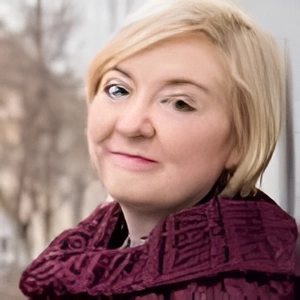
 Reading time: 12 minutes
Reading time: 12 minutes 



